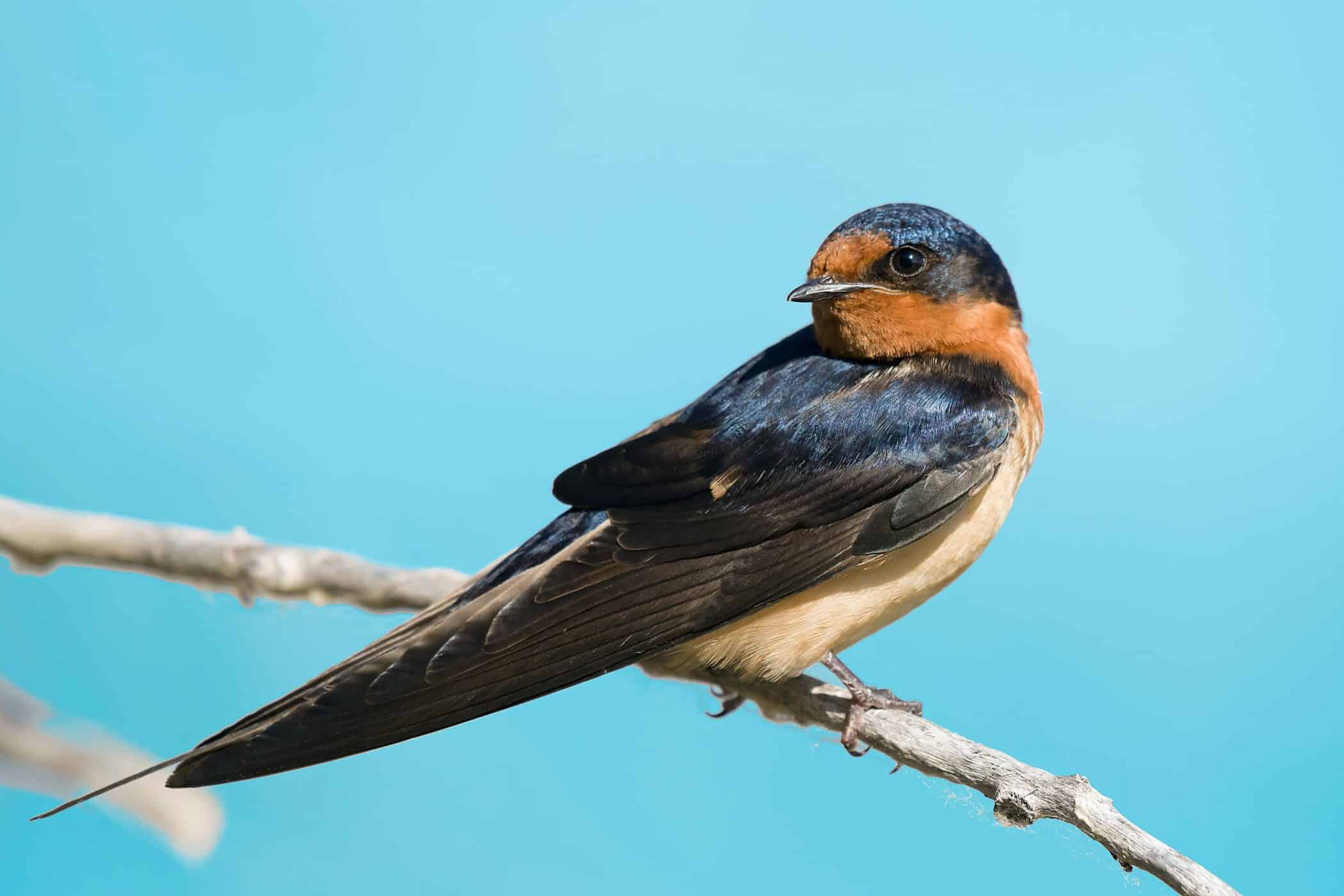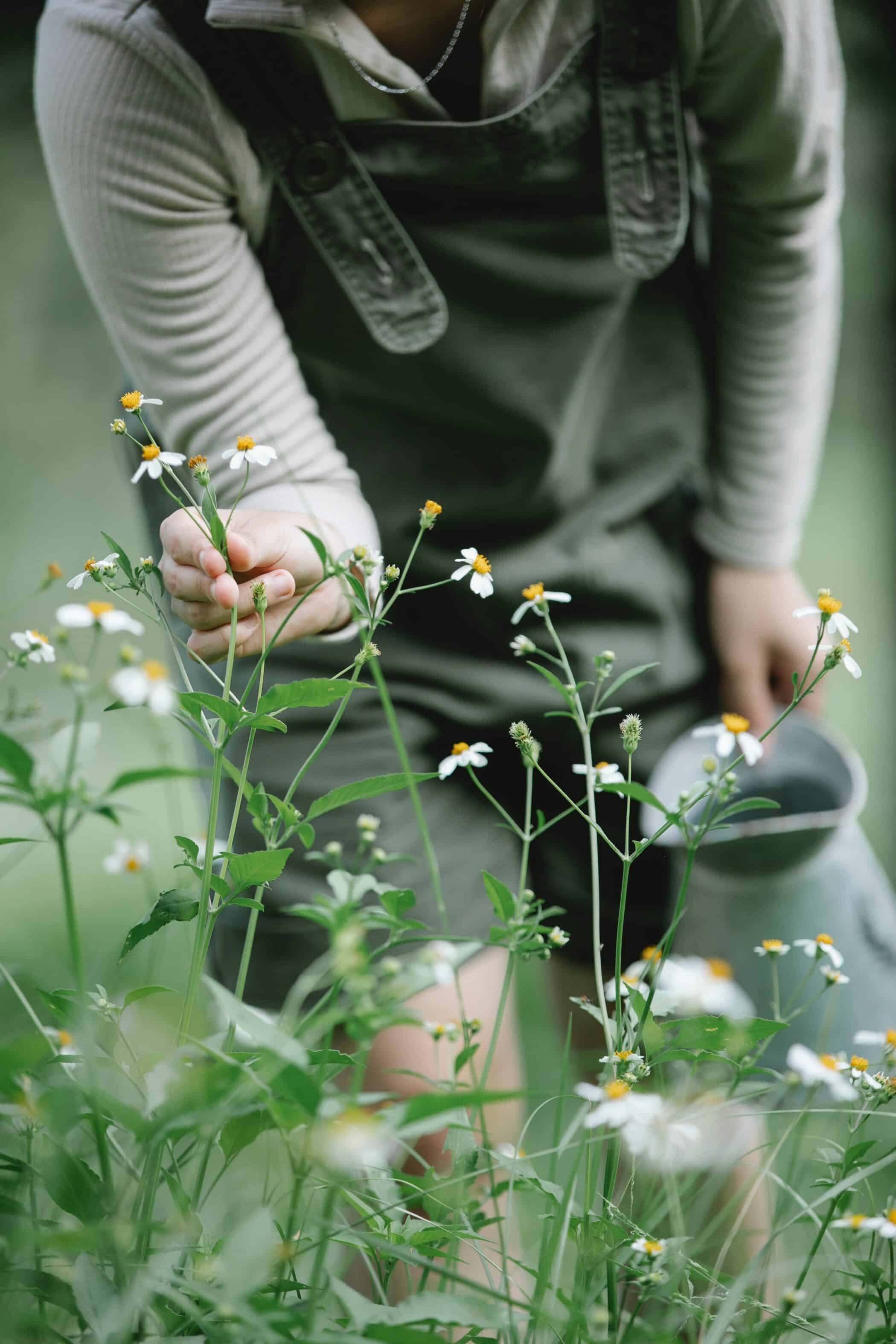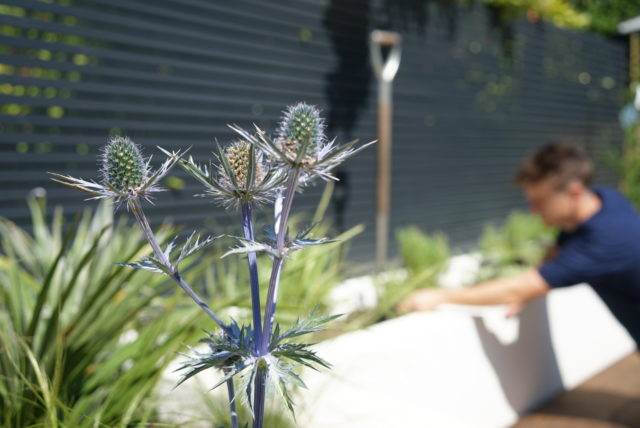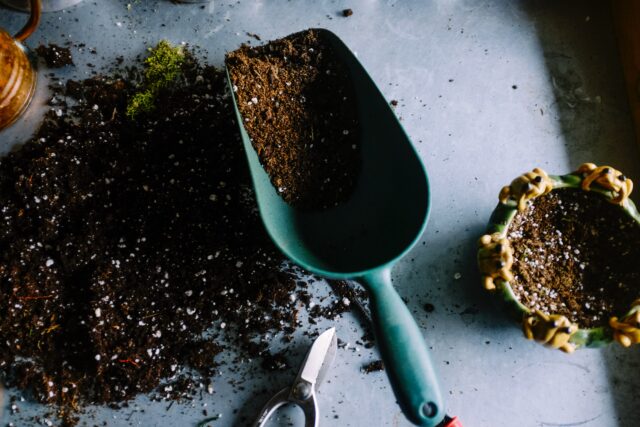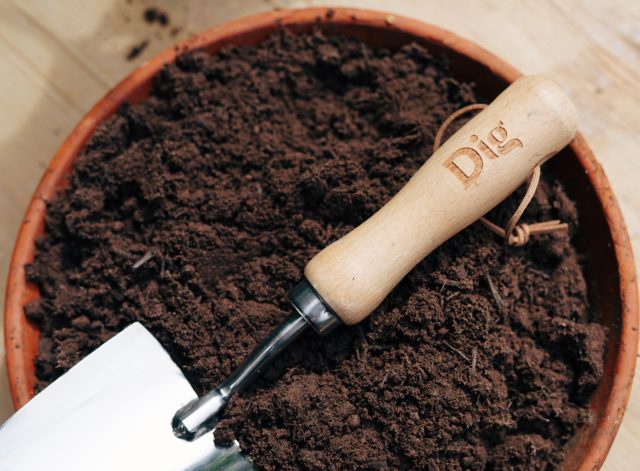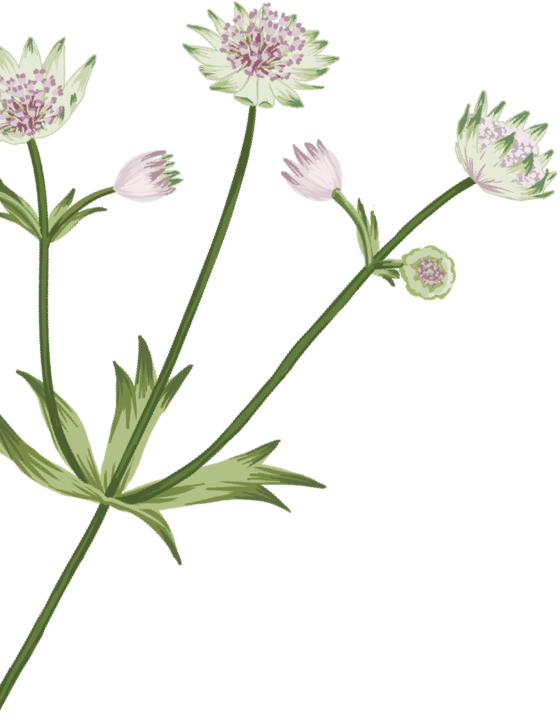As ever, there’s also plenty to do and a lot to celebrate so here are a few jobs for your outdoor space over the next few weeks.
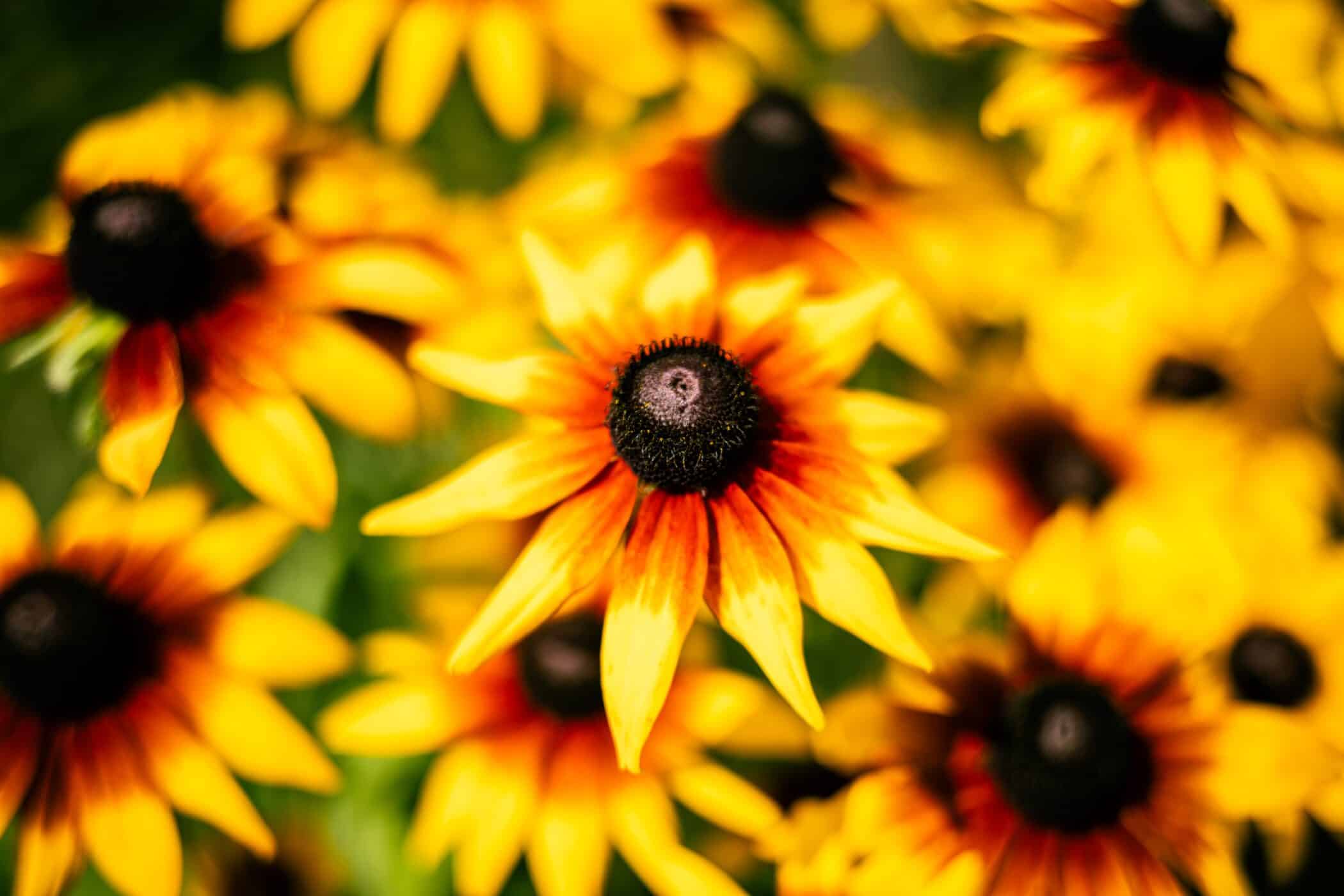
Watering and soil checking
Compared to last August’s soaring temperatures, this August has been a mild one… so far at least. Nonetheless, with the unusual weather patterns we’re seeing as a result of climate change, that can all change very quickly. August can be a dry month and it can be a warm month so we still advise paying attention to your plants and to the soil they are in – especially if they are in containers. Despite lots of rainfall, plants and the soil beneath them can dry out very quickly with rain often only reaching a plant’s foliage. Make sure therefore to keep an eye on how your plants are looking – daily in warm weather and every few days when it’s cooler. With drooping or wilting leaves, plants will tell you when they’re in need. It’s also worth checking beneath the surface of the soil too. A dry surface can be hiding perfectly damp soil an inch or so down. Checking on this can help to avoid overwatering.
If you have a lawn, consider letting it grow a little longer this month too. It will retain water better meaning you’ll have to water it less saving you time and money – which also ticks the sustainability box neatly.
Deadhead Dahlias
Dahlias are the star of a late-summer garden. As they produce blooms through the next month or so, remember to deadhead any finished flowers to encourage more and more blooms. It’s crucial to note that buds of flowers that haven’t bloomed yet will be round, whereas finished flowers will retreat into pointed buds. These are the ones to snip!
There’s a very helpful guide here.
Buddleia containment
Our theme for children, The Adventure, features the heroic and long-flowering buddleia. This mightily successful plant often crops up where it’s most unexpected (they’re a common sight along railway tracks, and growing out of cracks on the sides of buildings). Buddleia can seed very easily and therefore crop up where you perhaps might not want it in your garden – but this is easily preventable. When you notice your buddleia flowers coming to an end, simply chop off the finished flower heads and dispose of them in your garden waste. This has the dual advantage of strengthening the foliage (though it won’t flower again this year) and keeps this stalwart of pollinating plants contained. If you don’t mind where it crops up though, then you have our blessing to leave it. The butterflies will be very grateful.
You can read more about the benefits of Buddleia to butterflies here on The Wildlife Trust’s website.
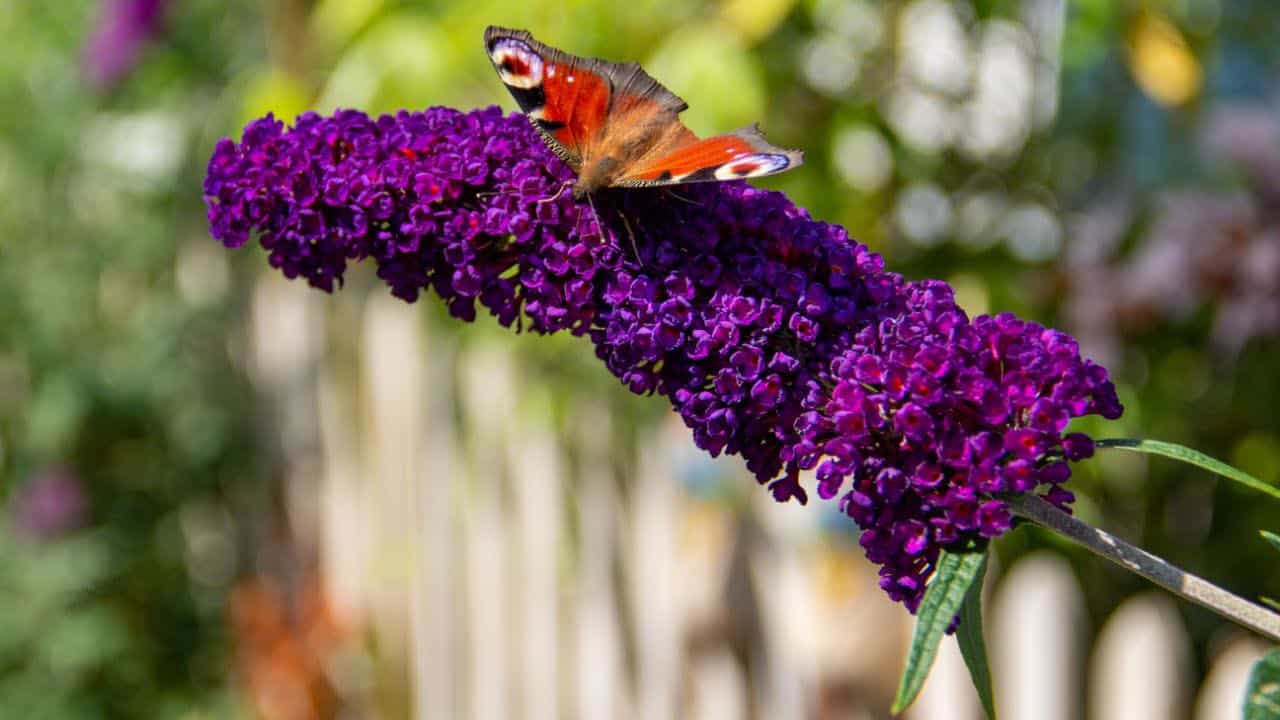
Drying flowers
Less job, more enjoyable way to spend an hour or two – now is a great time to dry flowers. With blooms well underway in a late summer garden, get the secateurs out to snip off a few select specimens and hang them to dry. Try to do this before they deteriorate too much on the plant. Once cut from the plant, trim any lower branches or foliage away to create a nice clean stem, and bunch together, hanging upside down in a dry place indoors. Ideally, you should hang them somewhere with a bit of airflow too to prevent any rotting. A far more affordable way of creating beautiful dried blooms for your home.
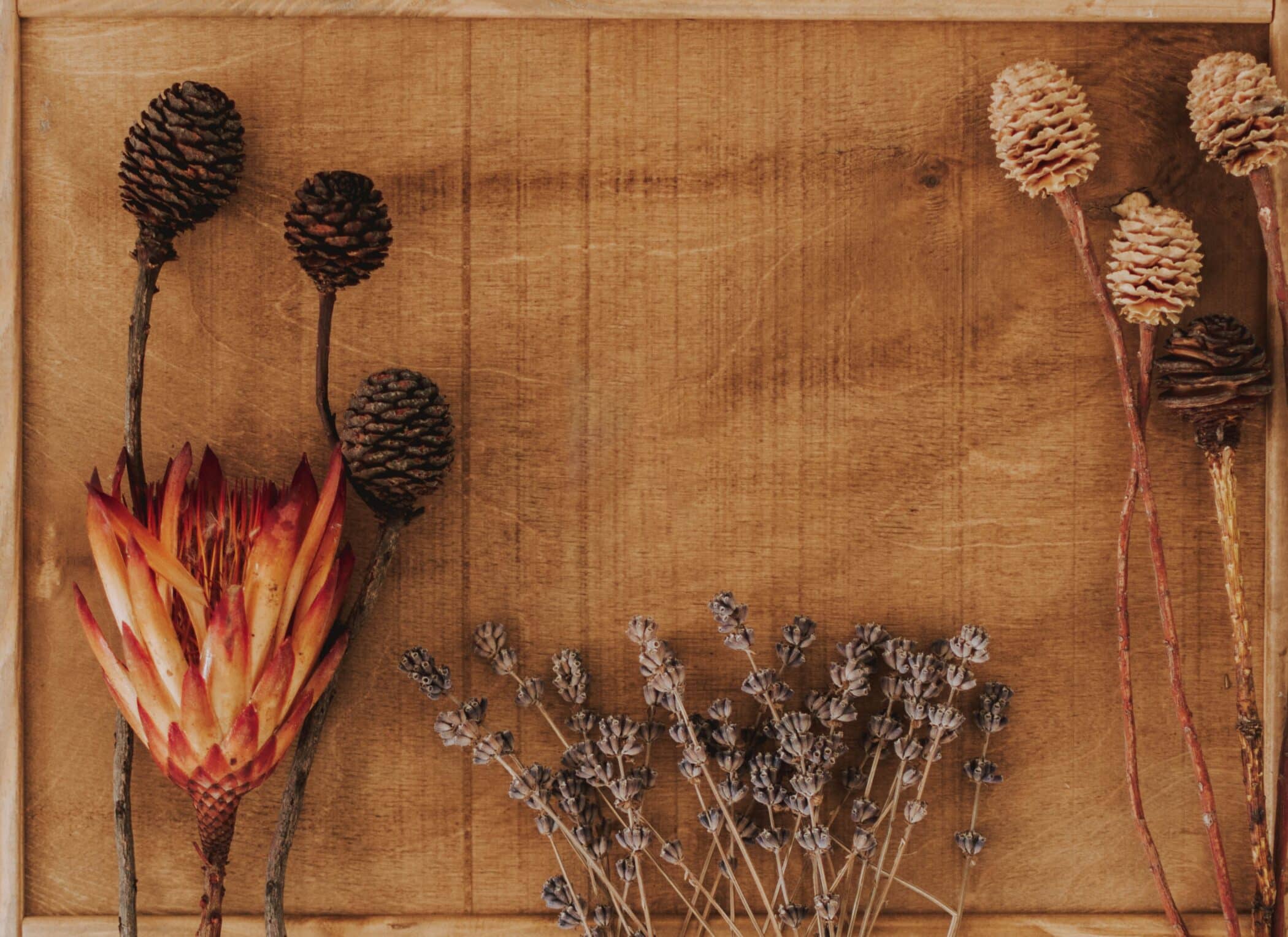
Plug the gaps
There’s never a bad time to assess your outdoor space for gaps but at this time of year, before certain perennials (plants that come back every year) die back, you’ll have a clear view of where the gaps are. Once you’ve identified any gaps, you can fill these with similar plants to flow well with those already in your garden. If you’ve noticed gaps that need filling but don’t know what to plant, you can contact us at Dig to discuss the best options, or, of course, fill them yourself with a trip to your trusty local garden centre. If you want to experiment yourself but you’re unsure what to plant, it’s always a good idea to double up on a plant you already have that you know works well. Play it safe rather than risk disappointment.
What to prune now
Pruning, like watering and feeding, is more or less a constant task in the garden. There’s always something to tidy, depending on the time of year. This month, here are a few plants that really benefit from a haircut around now listed below.
- Overgrowing Thyme benefits from a trim at this time of year as it can risk suffering from wet weather damage if cut back later in the year. A quick trim will also encourage some new growth and fresh, young leaves (which are particularly good for cooking with)
- Wisteria can still be pruned in August. As mentioned last month, cut back any leggy, lengthy side shoots to approximately five leaves in length – once it has finished flowering. This helps to keep it looking neat, stops it taking over the side of your house, and will ensure more blooms next year.
- The same goes for another climber: Jasmine, which also benefits from a trim around now. Once it has finished flowering, tidy it up to ensure that it doesn’t take over. (unless you want it to of course!)
- Lavender benefits from a cut-back too. As the flowers begin to fade, snip off the stems in bunches to leave nice tight balls of lavender plants with plenty of dense foliage left. This also stops them becoming ‘woody’, where the branches grow long and the lower sections harden. Annual pruning helps prevent this, giving you beautiful, fresh lavender every year. The trimmed flowerheads also dry very well (see above!) and smell great.
- Hedges are no longer being used by nesting birds and so now is a sensible time to give them a chop. They won’t grow much more before the winter and so from now until the end of September it’s a handy job to get ahead of.
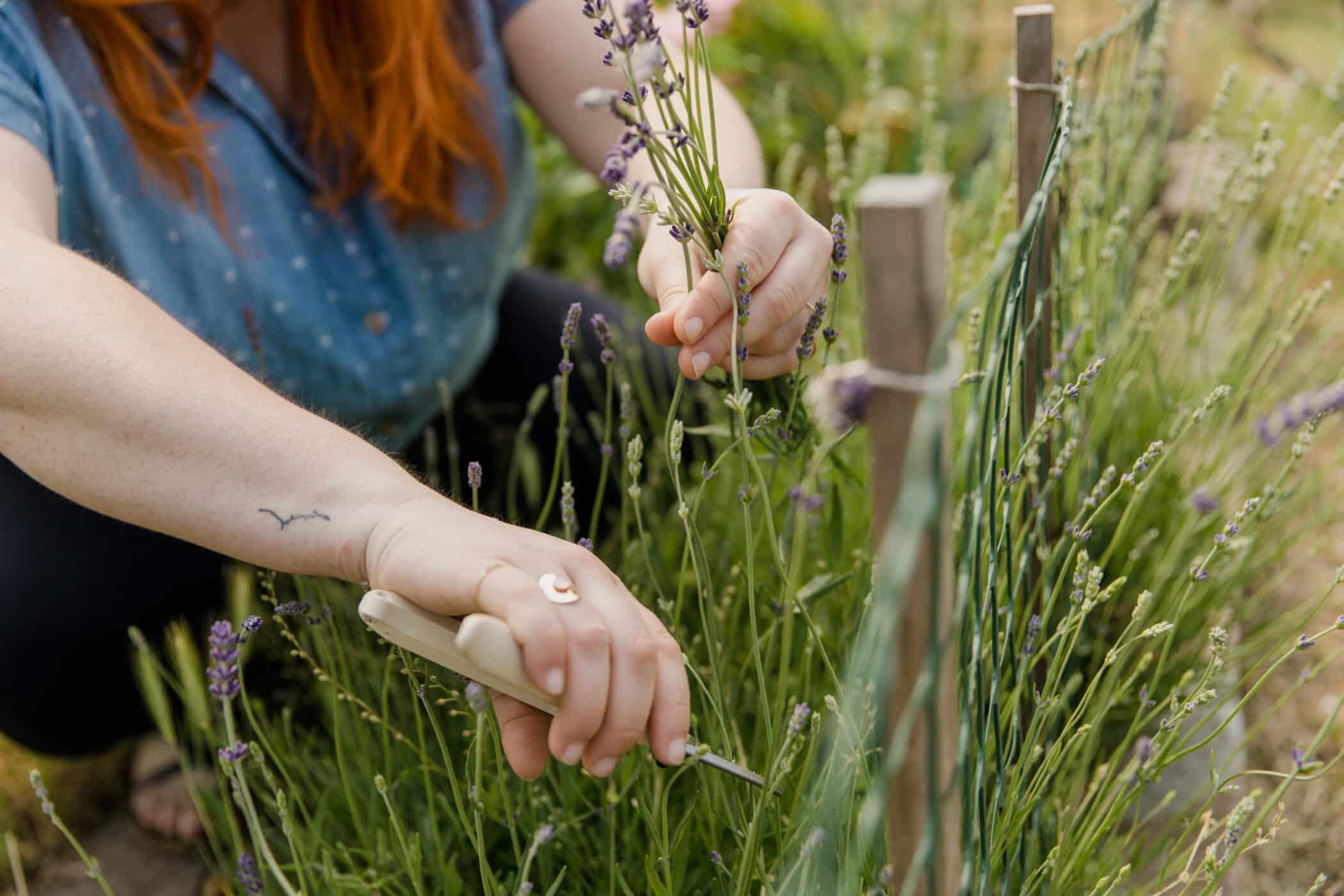
(Rose) hips don’t lie
Once certain roses have finished flowering, the flowerheads will turn into and leave behind ‘hips’ – beautiful red berry-looking fruit (though mind that these are inedible to humans off the plant!). These can be snipped off to encourage more flower heads, as the rose’s energy then won’t be going into producing the fruit. Alternatively, they can be left on the plant both to create a source of food for visiting birds or to provide some autumnal colour once the flowers have all finished. We tend to leave ours on.
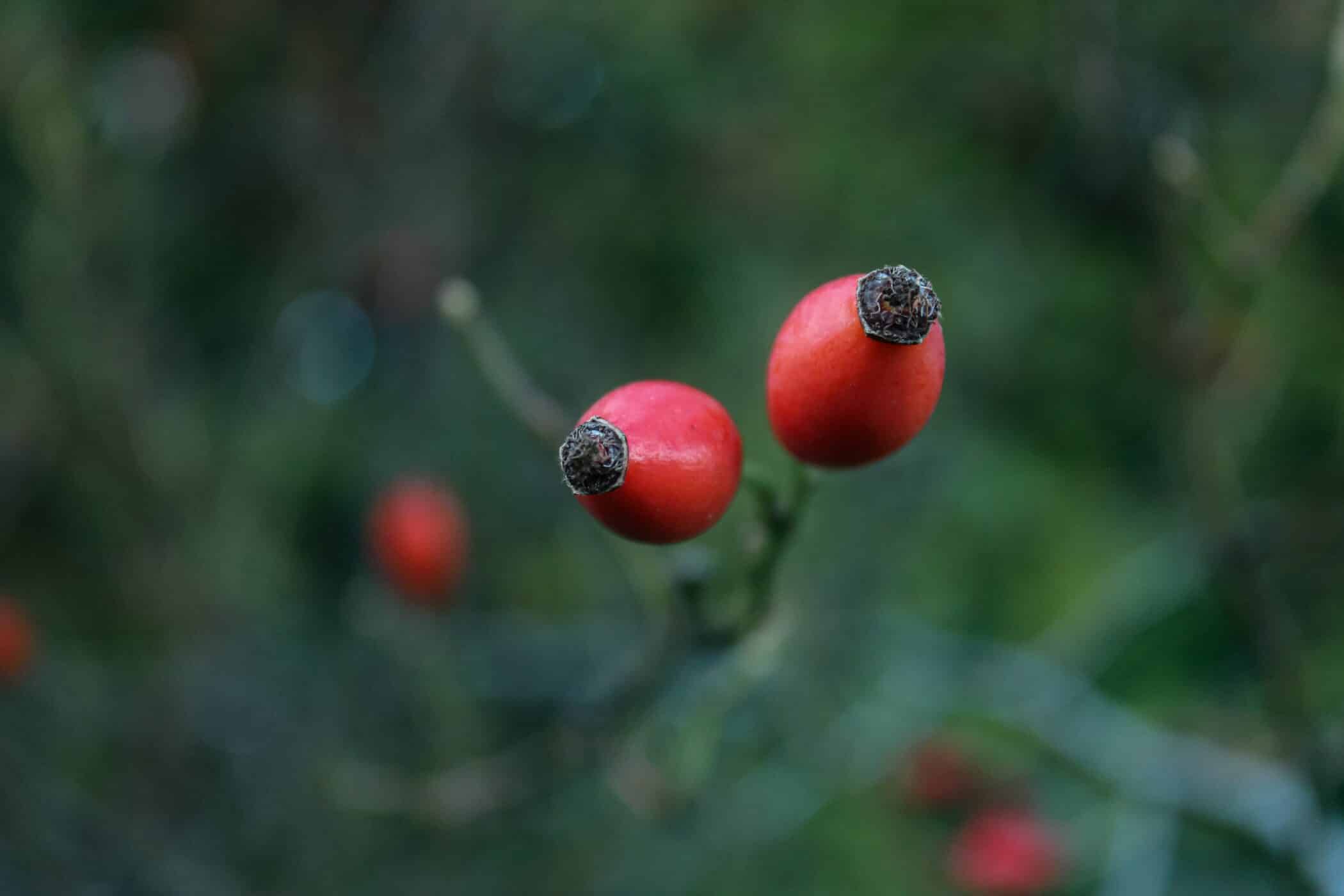
Helping hand for nature
Following on from our rosehip advice above, there are other things that you can be thinking about in your garden around now to encourage more wildlife into or onto your outdoor space. We’ve popped a few below.
- Hedgehogs hibernate in winter and so establishing a hedgehog house now means it will be a familiar sight when the winter comes. You can either build your own or purchase a very sturdy one from Robert Dyas here. Hedgehog numbers have been declining for years now, so every little thing we can do to help them is a must. Once installed, it’s a good idea to camouflage the house with branches or containers to minimise unwanted attention from predators such as domestic cats or foxes.
- Keep an eye on your pond, if you have one. With warmer weather, water levels might decrease so they can benefit from a top up around now.
- In the same vein, consider installing a bird bath. This can be a stylish, ornamental one, or it can be a terracotta plant pot tray. As long as it’s topped up, and in an open space, ideally off the ground (to avoid lurking predators having anywhere to hide) it will be a welcome source of water for these visiting pollinators and songsters.
